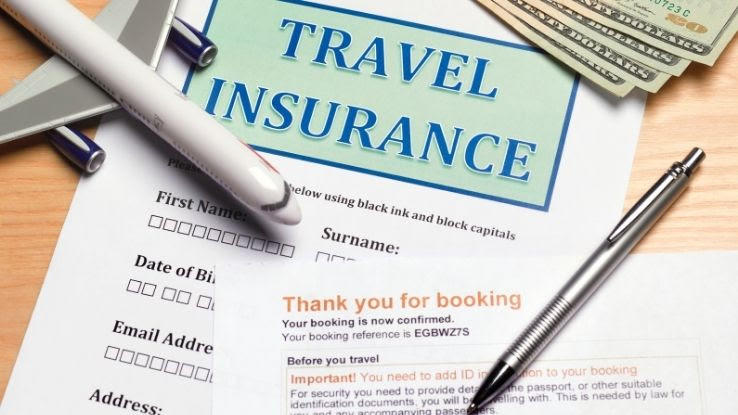An Unbiased View of Pacific Prime
An Unbiased View of Pacific Prime
Blog Article
3 Easy Facts About Pacific Prime Shown
Table of Contents5 Easy Facts About Pacific Prime ExplainedThe smart Trick of Pacific Prime That Nobody is Talking AboutSome Known Details About Pacific Prime Examine This Report about Pacific PrimeEverything about Pacific Prime

This is due to the fact that the data were gathered for a period of strong financial performance. Of the estimated 42 million individuals who were without insurance, almost concerning 420,000 (concerning 1 percent) were under 65 years old, the age at which most Americans end up being qualified for Medicare; 32 million were adults in between ages 18 and 65, around 19 percent of all grownups in this age; and 10 million were youngsters under 18 years old, regarding 13.9 percent of all children (Mills, 2000).
These price quotes of the number of individuals uninsured are produced from the yearly March Supplement to the Current Populace Survey (CPS), conducted by the Demographics Bureau. Unless or else kept in mind, national estimates of individuals without health insurance and proportions of the populace with different kinds of insurance coverage are based on the CPS, one of the most extensively utilized source of price quotes of insurance protection and uninsurance prices.
The smart Trick of Pacific Prime That Nobody is Talking About

Still, the CPS is specifically helpful because it creates yearly estimates fairly quickly, reporting the previous year's insurance policy protection estimates each September, and since it is the basis for a regular collection of estimates for greater than twenty years, permitting analysis of trends in insurance coverage gradually. For these factors, in addition to the extensive use of the CPS in other research studies of insurance policy protection that exist in this report, we count on CPS quotes, with constraints kept in mind.

The price quote of the number of uninsured people increases when a populace's insurance policy standing is tracked for several years. Over a three-year period starting early in 1993, 72 million people, 29 percent of the U.S. https://www.kickstarter.com/profile/pacificpr1me/about. population, were without coverage for a minimum of one month. Within a single year (1994 ), 53 million individuals experienced at the very least a month without protection (Bennefield, 1998a)
Six out of every 10 uninsured grownups are themselves used. Although working Your Domain Name does boost the probability that a person and one's member of the family will certainly have insurance policy, it is not an assurance. Even participants of family members with two permanent wage income earners have virtually a one-in-ten opportunity of being uninsured (9.1 percent without insurance price) (Hoffman and Pohl, 2000).
Pacific Prime for Dummies
New immigrants make up a substantial percentage of individuals without health insurance. One evaluation has actually attributed a substantial part of the current development in the size of the U.S. without insurance population to immigrants that got here in the nation in between 1994 and 1998 (Camarota and Edwards, 2000). Current immigrants (those who pertained to the United States within the past four years) do have a high price of being without insurance (46 percent), however they and their children represent just 6 percent of those without insurance coverage across the country (Holahan et al., 2001).
The connection in between health and wellness insurance policy and accessibility to care is well established, as recorded later in this chapter. The partnership in between health and wellness insurance and wellness results is neither straight neither basic, a substantial clinical and health services research literature links wellness insurance protection to improved access to care, better quality, and improved personal and population health standing.
Degrees of evaluation for checking out the results of uninsurance. This discussion of medical insurance protection concentrates mostly on the united state population under age 65 because practically all Americans 65 and older have Medicare or other public coverage. Additionally, it focuses specifically on those with no medical insurance for any size of time.
The 7-Minute Rule for Pacific Prime
The issues encountered by the underinsured are in some respects similar to those faced by the without insurance, although they are typically less extreme. Health and wellness insurance coverage, nonetheless, is neither required nor adequate to acquire access to medical solutions. The independent and direct effect of health and wellness insurance policy protection on access to health solutions is well established.
Others will certainly obtain the health and wellness care they need also without health insurance policy, by spending for it expense or seeking it from suppliers who use treatment cost-free or at highly subsidized rates. For still others, medical insurance alone does not guarantee receipt of care as a result of other nonfinancial barriers, such as a lack of wellness care carriers in their community, minimal access to transport, illiteracy, or etymological and social distinctions.
Rumored Buzz on Pacific Prime
Formal research about uninsured populations in the United States dates to the late 1920s and early 1930s when the Committee on the Expense of Treatment created a series of reports regarding financing medical professional office brows through and hospitalizations. This problem became significant as the varieties of clinically indigent climbed up throughout the Great Depression.
Report this page